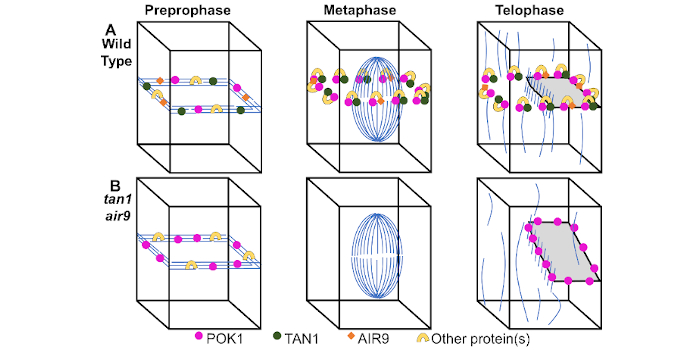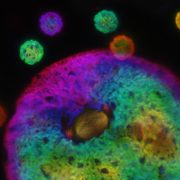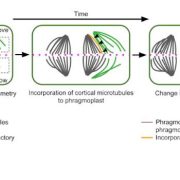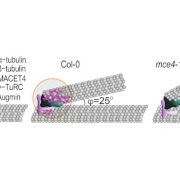Unrelated microtubule-binding proteins work together to position the new cell wall during cell division
Mills et al. examine how microtubule-binding proteins localize to the site of cell division in plants https://doi.org/10.1093/plcell/koac266
Alison Mills1, + and Carolyn G. Rasmussen1,2
1Biochemistry Graduate Group, University of California, Riverside, USA.
2Department of Botany and Plant Sciences, Center for Plant Cell Biology, Institute for Integrative Genome Biology, University of California, Riverside, USA.
+ Current address: Department of Molecular, Cell, and Developmental Biology, University of California, Santa Cruz, USA
Background: Unlike animal cells, plant cells cannot move, due to their semi-rigid cell walls. The correct positioning of the new cell wall is important for overall plant growth and development. Three microtubule-binding proteins are involved in division plane orientation: TANGLED1 (TAN1), AUXIN INDUCED IN ROOT CULTURES9 (AIR9), and PHRAGMOPLAST ORIENTING KINESIN1 (POK1). These proteins localize as a ring at the edge of the cell where the new cell wall will insert during cell division, at a position called the division site. Here, we focused on how TAN1 and POK1 interactions promote their localization to the division site, and their function in plant growth and division plane positioning.
Question: How do TAN1 and AIR9 contribute to POK1 localization, and how does POK1 localization affect new cell wall placement?
Findings: TAN1 and AIR9 together maintain POK1 at the division site in Arabidopsis thaliana. When mutant versions of TAN1 that no longer interact with POK1 were transformed into the tan1 air9 double mutant, POK1 and TAN1 localization was partially disrupted and cell wall placement defects occurred. This suggests that POK1 interaction with TAN1 is important for their correct division site localization and new cell wall placement.

Next steps: This work strongly suggests that yet unknown proteins mediate TAN1 and POK1 interaction. Discovering what those proteins are, and how AIR9 contributes to division plane positioning are next. Understanding how plants position their division plane will contribute to understanding plant growth and has the long-term potential to contribute to next-generation crop development.
Reference:
Alison M. Mills, Victoria H. Morris, Carolyn G Rasmussen (2022) Localization of PHRAGMOPLAST ORIENTING KINESIN1 at the division site depends on the microtubule binding proteins TANGLED1 and AUXIN-INDUCED IN ROOT CULTURES9 in Arabidopsis. https://doi.org/10.1093/plcell/koac266






